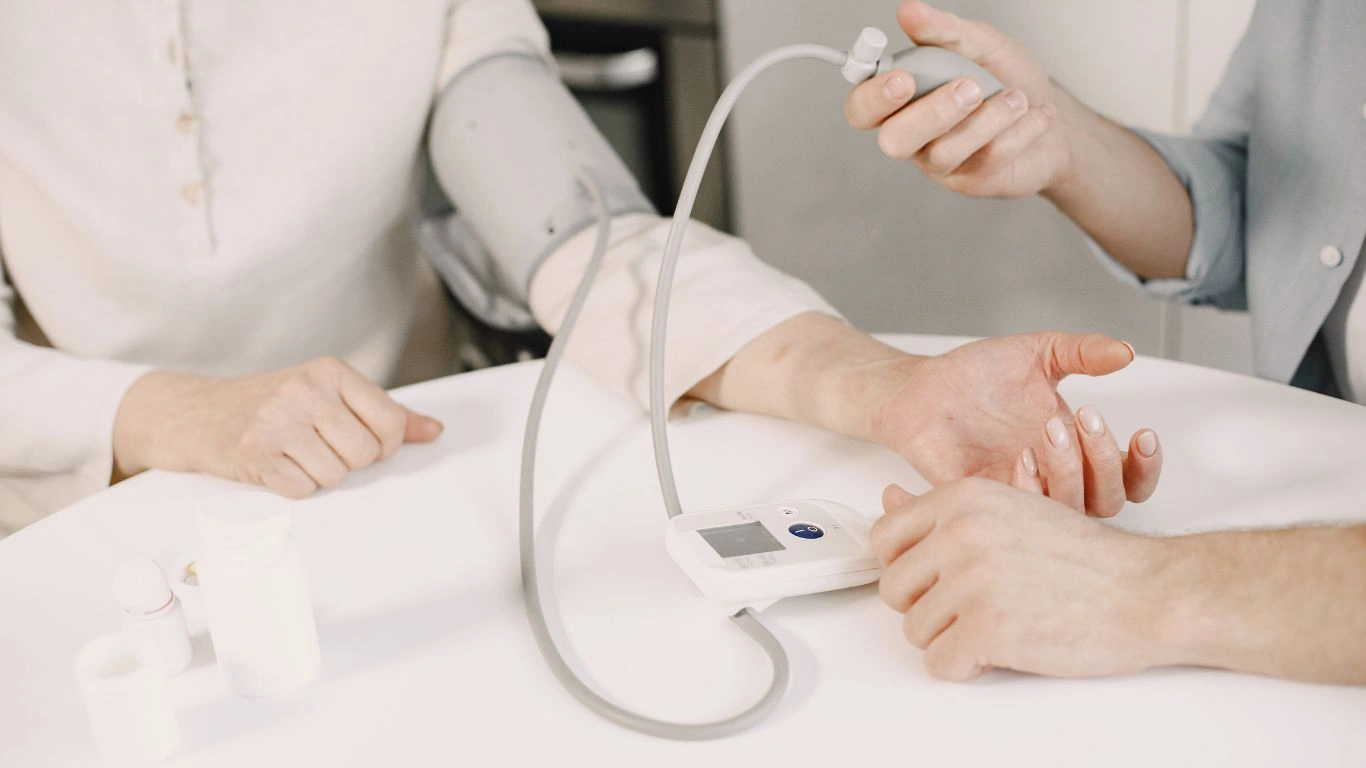Fix Salt Cravings Fast: Best Tips for Hypertension Relief
Ever find yourself reaching for the salt shaker like it’s calling your name—even though you *know* you’ve got hypertension? You’re not alone. As an Internal Medicine physician specializing in hypertension management, I’ve seen so many of my patients struggle with this same issue. Cravings for salty foods can feel almost primal, and when you add high blood pressure into the mix, it can be a real tug-of-war. So, if you’re wondering how to fix salt cravings with hypertension, you’re in the right place. Let’s dive into why it happens, and more importantly, what you can actually do about it without feeling deprived or miserable.
Understanding Why Salt Cravings Happen in the First Place

It’s Not Just About Willpower
This is one of the first things I tell my patients—craving salt doesn’t mean you’re weak. There’s a whole lot going on behind the scenes in your body. Salt cravings can be linked to things like stress, adrenal imbalances, dehydration, and even certain medications you might be taking for your blood pressure.
Let’s say you’ve been on a diuretic for a while. It’s doing its job lowering your blood pressure, sure. But it could also be flushing out electrolytes like sodium a bit too efficiently. Your body then thinks it needs to ‘replenish’—cue the salt cravings.
There’s a Psychological Side Too
Salt often equals comfort. Chips during stressful nights, ramen in college, popcorn at the movies—you name it. These associations get wired into our brains. So sometimes, the craving isn’t even about salt as much as it’s about a memory or emotional need.
How to Fix Salt Cravings with Hypertension—Without Feeling Miserable

1. Rewire Your Taste Buds—Yes, It’s Totally Possible
Our taste buds are surprisingly adaptable. When I guide patients through reducing their salt intake, many are shocked to find that foods they once thought were bland start tasting flavorful after a few weeks. It’s about consistency, not perfection. Start by cutting back little by little instead of going cold turkey.
- Use herbs like rosemary, thyme, and basil to add flavor without sodium.
- Experiment with citrus—lemon juice can brighten up dishes.
- Try umami-rich foods like mushrooms, tomatoes, or nutritional yeast.
2. Focus on Magnesium and Potassium-Rich Foods
This right here is a *game-changer*. Sometimes, salt cravings are your body’s confused cry for minerals. Foods high in magnesium and potassium help balance electrolytes and reduce the intensity of salt cravings over time.
- Avocados
- Sweet potatoes
- Bananas
- Leafy greens like spinach and kale
- Unsalted nuts like almonds and cashews
I remember a patient, let’s call her Lisa, who used to snack on pretzels all day. Once we added magnesium supplements and a daily spinach smoothie to her diet, those cravings dropped off dramatically. True story.
3. Hydration, Hydration, Hydration
Can’t stress this enough. Sometimes, what feels like a salt craving is actually your body screaming for water. Especially if you’re on a water pill (diuretic), staying well-hydrated is crucial.
A quick hydration trick I often share: keep a reusable water bottle on your desk or in your bag. If it’s visible, you’re more likely to drink. Add a slice of cucumber or lemon to keep it interesting.
Why Managing Salt Matters More Than You Think

Even “Healthy” Foods Can Be Sneaky
Here’s something that surprises a lot of folks—even so-called “healthy” foods can be loaded with sodium. That low-fat turkey breast? Might have more salt than you think. Canned veggies? Often come swimming in brine.
Always read labels. Look for terms like “low-sodium” or “no salt added,” and aim for foods with under 140mg of sodium per serving when possible. I tell my patients that reading labels is one of the most powerful tools they have in managing their condition.
Be Patient With Yourself
Changing habits, especially those tied to cravings, is a process—not an overnight fix. But I promise, your body will thank you for every little step you take. And with the right strategies in place, salt cravings can absolutely be tamed, even if you’re living with hypertension.
Smart Swaps: Satisfying Salt Cravings Without the Spike

Craving Chips? Try This Instead
Okay, real talk—when that salty, crunchy craving hits, celery sticks just aren’t gonna cut it. I get it. I’ve been there after a long shift, staring into the pantry like a zombie. But here’s the good news: there are actually some super satisfying alternatives that won’t wreck your blood pressure.
- Kale chips: Toss fresh kale with olive oil, garlic powder, and nutritional yeast, bake until crispy. Shockingly addictive.
- Roasted chickpeas: A little olive oil, your favorite salt-free seasoning, and a hot oven? Perfection.
- Air-popped popcorn: Use a squeeze of lime or sprinkle of smoked paprika instead of salt.
I had a patient—let’s call him Mike—who used to down a whole bag of pretzels in one sitting. Once he started prepping a batch of homemade roasted chickpeas every Sunday, not only did the cravings drop, but he actually lost weight and improved his BP readings in just a few months. It’s amazing what the right snack can do.
Seasoning Savvy: Flavor Without the Salt
This is something I wish more people knew: salt isn’t the only flavor enhancer out there. In fact, once you start exploring different spice blends and textures, you might not even miss the salt. Here’s what I personally keep in my kitchen:
- Smoked paprika – adds depth and warmth to almost anything.
- Garlic and onion powder – a total game-changer for soups and stews.
- Lemon zest – freshens up veggies, grains, and even proteins.
- Vinegars – apple cider, balsamic, red wine… great for cutting through blandness.
When I cut back on sodium in my own meals, these became my secret weapons. Don’t be afraid to experiment. Cooking becomes more creative—and you don’t feel like you’re sacrificing flavor for health.
Breaking the Habit Loop Around Salt

Know Your Triggers
Sometimes, it’s not just about the salt—it’s about when you crave it. Is it late at night while watching TV? After a stressful meeting? Right before dinner? Recognizing your personal triggers is a huge step toward breaking the cycle.
I had one patient who noticed she only craved salty snacks when she skipped lunch or stayed up too late. Once we addressed her daily routine and built in regular meals (and a decent bedtime), those cravings nearly vanished. It wasn’t about the salt—it was about exhaustion and blood sugar crashes.
Mindful Eating Can Change the Game
I know, “mindful eating” sounds a little fluffy—but hear me out. When you’re rushing, scrolling on your phone, or eating out of a bag, your brain barely registers the food. This often leads to over-snacking, especially on salty, crunchy things.
Try this instead:
- Put the food on a plate—no bags, no boxes.
- Chew slowly. Yep, like your grandma told you.
- Actually taste what you’re eating—note the texture, the spices, the aroma.
When you engage your senses, you tend to eat less and feel more satisfied. Even just slowing down has helped many of my patients reduce their portion sizes without even trying.
Hidden Salt: Where It Lurks (And How to Outsmart It)

The Usual Suspects
We all know chips and fast food are salty, but the sneaky stuff is what really trips people up. I always tell folks: just because something doesn’t taste “salty” doesn’t mean it’s not loaded with sodium.
Watch out for:
- Bread and rolls – One slice can pack 150+ mg of sodium. Two slices? That’s your “low-sodium” target for the meal right there.
- Breakfast cereals – Some “healthy” options still sneak in a bunch of salt.
- Deli meats – Even turkey and chicken breast can be little salt bombs.
- Frozen dinners – Often advertised as “light,” but full of sodium to make up for fat.
Reading Labels Like a Pro
This might sound boring, but trust me—it’s empowering. Flip that box over and look at:
- Sodium per serving: Aim for 140mg or less.
- Serving size: Double check it’s not hiding a sneaky “2.5 servings per package.”
- Percent Daily Value: Stay under 5% per serving when you can.
I walk my patients through this label trick during office visits, and it always clicks once they start practicing it. It’s one of the fastest ways to regain control over your diet without having to overhaul your entire kitchen.
Eat More Whole Foods, Fewer Labels
When in doubt, the less packaging, the better. Fresh fruits, veggies, whole grains, legumes, unprocessed meats—these are naturally low in sodium and high in nutrients your body actually craves (even if it’s disguising it as “salt hunger”).
Once patients start loading up on whole foods, their energy levels improve, their numbers stabilize, and—surprise surprise—the cravings fade. It’s not about perfection, it’s about stacking little wins throughout the week.
Building a Sustainable Lifestyle to Tame Salt Cravings

Embrace the DASH Diet
One of the most effective strategies I’ve recommended to patients battling hypertension and salt cravings is the DASH (Dietary Approaches to Stop Hypertension) diet. This eating plan emphasizes fruits, vegetables, whole grains, lean proteins, and low-fat dairy, all while reducing sodium intake. It’s not just about cutting salt; it’s about nourishing your body with the right nutrients.
Incorporating foods rich in potassium, magnesium, and calcium can help counteract the effects of sodium and lower blood pressure. Think bananas, sweet potatoes, spinach, and beans. These foods not only support heart health but also help curb salt cravings by balancing your body’s electrolyte levels.
Stay Hydrated
Dehydration can often masquerade as salt cravings. When your body lacks fluids, it may signal a desire for salty foods to retain water. Ensuring adequate hydration throughout the day can help mitigate these false cravings. Aim for at least 8 glasses of water daily, and consider increasing intake during hot weather or after exercise.
Mindful Eating Practices
Practicing mindful eating can significantly impact your relationship with food and cravings. Pay attention to hunger cues, eat slowly, and savor each bite. This approach helps you recognize when you’re truly hungry versus when you’re eating out of habit or emotion. Over time, mindful eating can reduce the frequency and intensity of salt cravings.
Regular Physical Activity
Engaging in regular exercise not only supports overall cardiovascular health but also helps regulate appetite and reduce stress-induced cravings. Activities like walking, swimming, or yoga can be beneficial. Aim for at least 150 minutes of moderate-intensity exercise per week to reap the benefits.
Seek Support and Accountability
Changing dietary habits can be challenging, but you don’t have to do it alone. Consider joining a support group, working with a nutritionist, or involving family and friends in your journey. Sharing your goals and progress can provide motivation and accountability, making it easier to stay on track.
References
- DASH Diet – Wikipedia
- Shaking the Salt Habit to Lower High Blood Pressure – American Heart Association
- Craving salt: Eight causes and outlook – Medical News Today
- Why Do You Crave Salt? – Cleveland Clinic Health Essentials
- Break Your Salt Craving and Make Smart Food Choices – Orlando Health
Disclaimer
This article is for informational purposes only and does not constitute medical advice. Always consult with a healthcare professional before making significant changes to your diet or lifestyle, especially if you have underlying health conditions or are on medication.

Dr. Gwenna Aazee is a board-certified Internal Medicine Physician with a special focus on hypertension management, chronic disease prevention, and patient education. With years of experience in both clinical practice and medical writing, she’s passionate about turning evidence-based medicine into accessible, actionable advice. Through her work at Healthusias.com, Dr. Aazee empowers readers to take charge of their health with confidence and clarity. Off the clock, she enjoys deep dives into nutrition research, long walks with her rescue pup, and simplifying medical jargon one article at a time.






